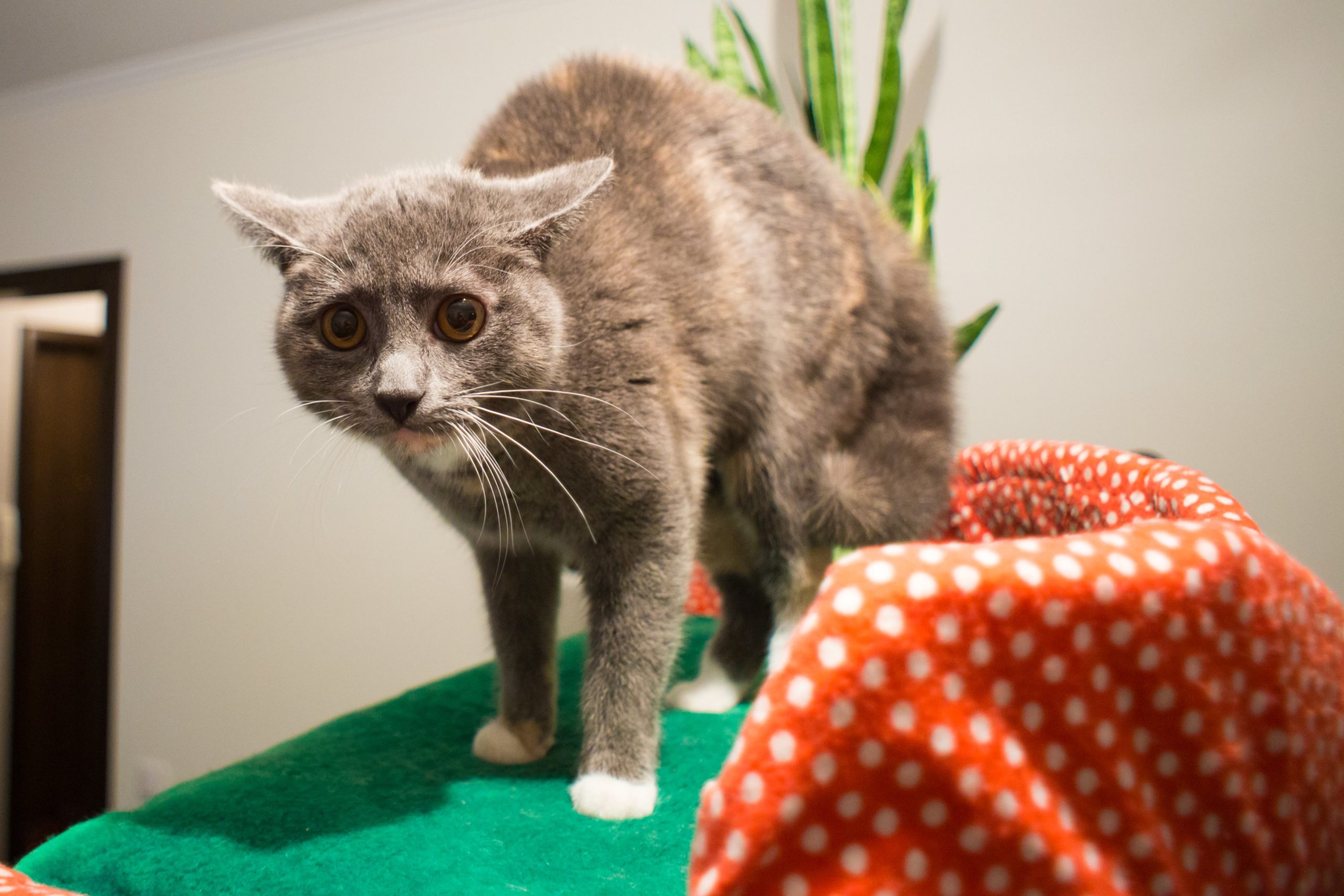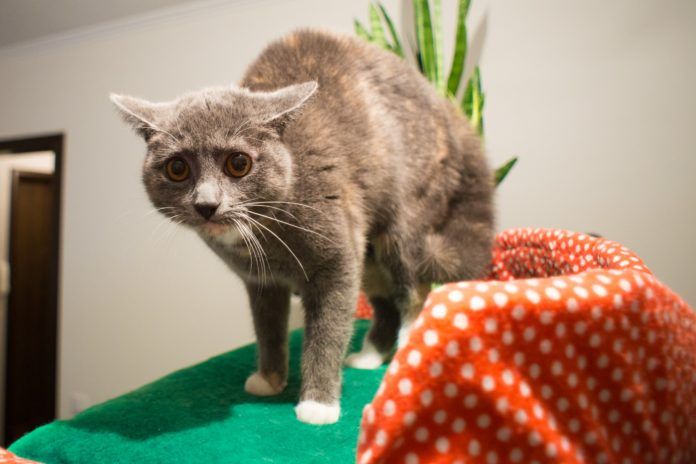Dreamstime.com

Regardless of age, breed or gender, any cat can develop a serious and potentially disabling anxiety disorder. This is an affliction in which a cat is persistently and significantly disturbed by phenomena or situations that a normal cat would ignore or soon learn to disregard.
Unfortunately, this baffling condition is one of the more frequently observed among all feline behavioral syndromes. In some cases, the perceived threat may actually be something about which a cat could be justifiably anxious — the presence of a hostile dog or cat in the same household, for example. But in other cases, the source of the torment might not pose any real threat at all — the rumbling sound of distant thunder, for example.
A consultation is in order
In either case, the responsible cat owner should take appropriate steps to relieve the cat of her anxiety. Consultation with a therapist specializing in animal behavior — who will likely attempt to “decondition” an obsessively fearful cat to the object of its phobia — may succeed in resolving the problem. And in the past few decades, significant progress has been made in treating feline anxiety disorders with certain drugs that were originally formulated to treat similar conditions in humans.
“Anxious feelings in a cat may be rooted in a fear that something will either happen or not happen,” says Nicholas Dodman, BVMS, professor emeritus at the Cummings School of Veterinary Medicine at Tufts University. “For example, an anxious cat that is left at home alone may be worried that its owners will never come back. Another cat may be worried during a noisy thunderstorm that something bad is going to happen to it.”
Wariness, of course, is a useful response to a phenomenon that a cat has never before experienced. “It’s understandable that a cat would be wary about going around a corner for fear that a predator might be waiting for it,” says Dr. Dodman. “That instinctive kind of anxiety is healthy and useful — it’s what we call adaptive behavior. It helps the cat survive. On the other hand, there is maladaptive behavior.
“This is a dysfunctional kind of anxiety, a concern about something that really isn’t an issue. Thunder phobia or separation anxiety — the fear that owners who have left the house for a brief period will never return — are good examples of that type of problem.”
Sources of anxiety
Other common triggers of severe anxiety in a cat include: the arrival of a new baby in the household; the permanent departure of a family member from the household; rearrangement of furniture in the home; persistent and loud noise from a source outside the home; or even relocation of a cat’s litter box. “Cats can be anxious about living creatures,” says Dr. Dodman, “such as a dog that has just been brought into the home. But they can also be disturbed by inanimate things — flapping curtains or strange smells.” Such anxiety disorders tend to become worse over time if they are not addressed, he says, and the earlier in its progression that a serious phobia is identified, the easier it will be to relieve in most cases.
The traditional approach to treating feline behavioral disorders has centered on desensitizing a cat to environmental events or situations that are upsetting and altering the animal’s reactions through carefully structured training sessions. In recent years, however, such corrective behavior training has been significantly augmented with the use of anti-anxiety medications.
The aim of these medications is not to cure a cat’s phobia, but to ease his mind and mute his reactions to the causes of his anxiety. Although the medications can provide temporary relief from anxiety, they do not treat the underlying cause or causes. And once an animal is withdrawn from the drugs, the anxiety is likely to return — unless, of course, the underlying cause of the anxiety has meanwhile been eliminated.
How they work
The drugs that are used to reduce anxiety in cats act on an animal’s limbic system — the area of the brain that controls mood and emotion. Although the mechanism of action of these drugs is not fully understood, it appears that they have an effect on the brain’s supply of neurotransmitters — chemicals such as serotonin, norepinephrine and dopamine — that transmit nerve impulses within the brain. Scientists believe that an improper balance of neurotransmitters — either an excess or a deficiency — contributes to anxiety. The anti-anxiety medications help to restore this balance.
Most of the medications fall into one of three categories, depending on their specific biochemical activity. These categories are (1) selective serotonin reuptake inhibitors (SSRIs); (2) tricyclic antidepressants (TCAs); and (3) anxioselectives. The drugs are generally administered in a daily dosage, and it may take four to six weeks to determine whether they are effective.
Other categories of anti-anxiety drugs — benzodiazepines, for example — are administered on an as-needed basis. If, for example, a cat has separation anxiety, the owner administers the drug prior to leaving home. If the animal has a noise phobia, the drug is administered when a thunderstorm is about to strike. Although any of the medications may have side effects, such as vomiting, diarrhea, constipation or urinary retention, a veterinarian can usually manage these problems by adjusting the dosage. — Catnip staff




